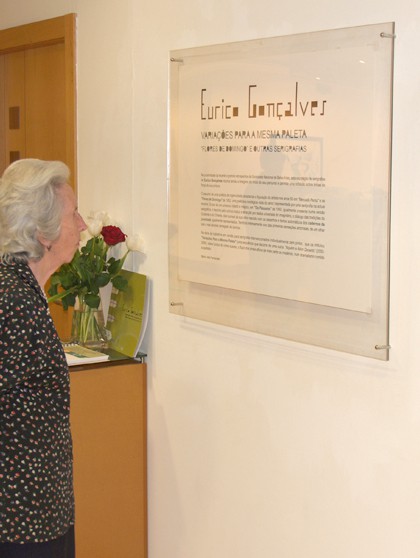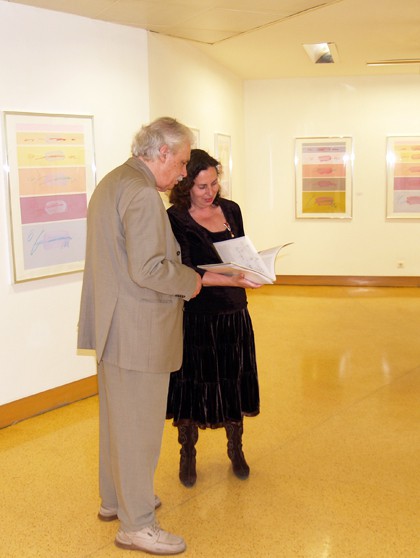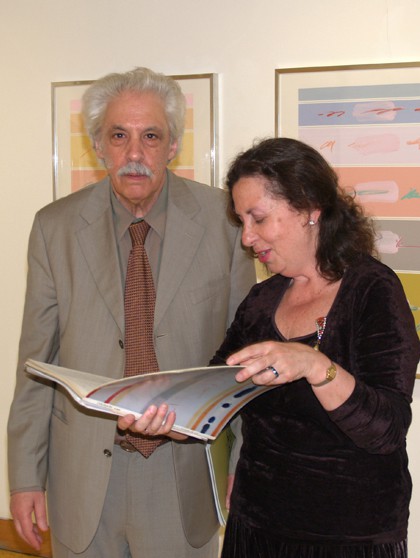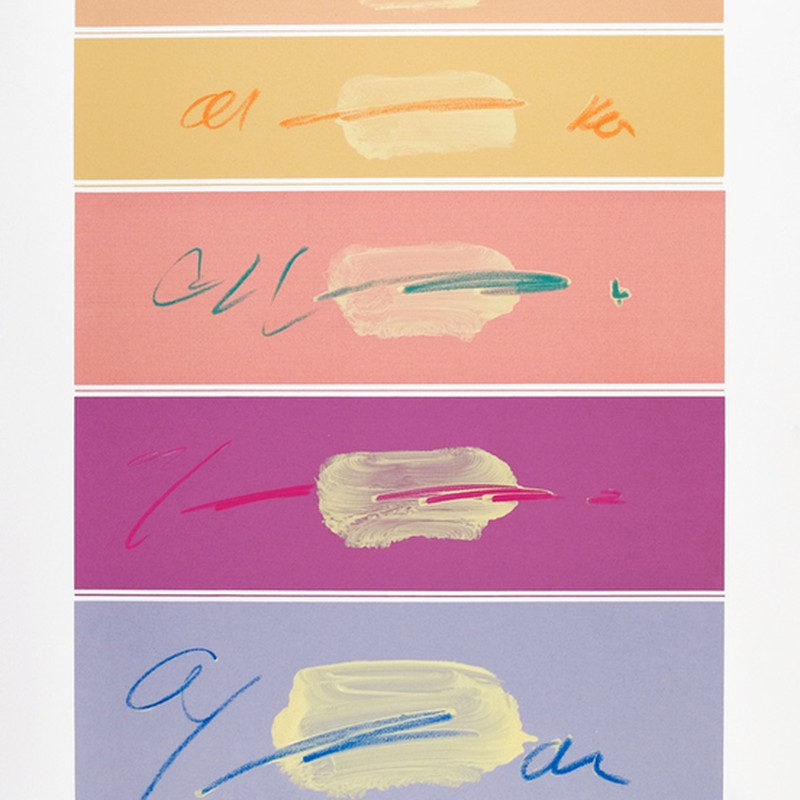


Variations for the Same Palette
An exhibition of screen prints by Eurico Gonçalves will have a great audience. It will take place at the Portuguese Screen Printing Center (Rua dos Industriais, nº 6, 1200 Lisbon) from May 17th to June 16th, close to the recent and large retrospective of the National Society of Fine Arts. The exhibition revisits themes and images from the beginning of his career and allows a reflection on the lines of force in his painting. The assumption of a poetics of naivety characterizes the artist's figuration in the 1950s in "Mercado Persa" and "Flores de Domingo" from 1952, a poetic and nostalgic vision of love ( represented by a silkscreen in the current exhibition). Echoing a childish and magical universe, in "The Birds" from 1950, also present in a silkscreen version, the fascination with the dreamlike reflects the attraction for universal data of the imagination River, the dialogue between the traditions of the West and the East, a surreal core of his work born with the drawings and automatic texts from his youth's notebooks, equally represented. Territory intensely alive with the first loving sensations, with a look that reality returns full of dreams. From the sixties onwards, figuration became simpler, approaching an abstract language that in the drawings erupts vertically into an organic rhythm, leaving on paper the direction of gestures in signs structured by the laws of chance and a logic Logic of the conscious and unconscious, reason, emotion and feeling. Writing is expression of the body (liable in vertical rhythms) and the world, the circle, emblem of totality, is an expression of the body. Its symbol radiates a suggestive, poetic force and is is represented in the current exhibition in screen-printed compositions from the series "I'm Alive and I Write Sol" from the end of the 80s and beginning of the 90s. Eurico's calligraphies, which since the sixties, remain a constant in his work, they reveal an interest in Eastern art and thought common to his work. North American painting and art European studies of Hartung, Mathieu, Michaux and Degottex and reveal the effort to translate a total reality beyond the barriers of understanding. In the series of works in silkscreen version intervened individually by the painter who titled them "Variations for the Same Palette" (a sequence that derives from another: "Aquém e Alémm Deserto ( 2000-2006)), against backgrounds of soft colors, the flow of signs brings the mysteries up close, in a contained and exalted drama. Signs of silence, abstract, land on invisible guidelines, horizons of order and tranquility "where one glimpses a space of infinity" (E.G.), overlapping in impulsive movements, of gestural registers. In these rapid "calligraphies", an immediate response to a space constructed by colorful horizontal bars, are born rhythms, unexpected shapes that move with the amazement and joy of a cosmic language. The graphics, sometimes detailed, sometimes linear, sometimes impetuous, unpredictable, expand, connect and release with the force of gesture, continuous or syncopated, marks that can become invented signs at the time of execution. They project cultural information, the habits and rites of contemporary civilization, the transfiguration of everyday life, and also the hidden energies of the unconscious, the powerful forces of the unconscious. those of creating the imagination. Depth, symbolic involvement of these signs, reverberation of surprise, freshness, knowledge and dream, knowledge of the dream. Maria João Fernandes
